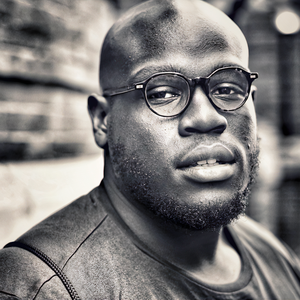For 100 years, one of the worst episodes of racial violence in U.S. history has remained largely untold. Through cover-up and a conspiracy of silence, the horror of the Tulsa Race Massacre was all but erased from the nation’s collective memory, but far from forgotten by the few living survivors.
Mobs of white residents deputized by police attacked Black residents in an affluent African American community in Tulsa, Oklahoma; homes, churches, businesses burned to the ground, erasing years of Black success; thousands were left homeless; hundreds were left dead. It all happened within a span of 18 hours on May 31 and June 1, 1921. Its impact — incalculable.
RELATED: Two days in Tulsa: Revelations and reflections on the 1921 race massacre | Tulsa Tragedy, 100 Years Later
Caleb Gayle
It’s why today many, including journalist, author and former Tulsa resident Caleb Gayle, are calling for a true public accounting of what happened in Tulsa. Now running parallel with increasing transparency and wounds laid bare at the arrival of its century mark is a reawakening of reckoning, or what should be done to address the enduring fallout — socially, politically, financially — of the Tulsa Race Massacre.
“I hope by the end of this conversation, I cause you some level of consternation and some discomfort in thinking about home,” Gayle said during a Nov. 2 online lecture titled after his acclaimed New York Times Magazine article, “100 Years Later: What Does Justice for the Tulsa Massacre Look Like?”
“As a Black person I would love to not spend all of my days reflecting on the trauma inflicted upon me," Gayle said. "However, I also know that, in order to do the repair, I have to know where it hurts and how much it hurts and how it got there in the first place.”
In the one-hour discussion, co-sponsored by ASU’s Center on the Future of War, the Center for the Future of Arizona and the State of Black Arizona, Gayle, the CEO of the National Conference on Citizenship and a New Arizona Fellow at New America, touted the work of Truth and ReconciliationTruth and Reconciliation committees, or commissions, are official bodies tasked with discovering and revealing past wrongdoing by a government or non-state actors, in the hope of resolving conflict leftover from the past. committees and the restorative principles of social reparations as starting points to address the lasting effects of the 1921 massacre.
The effort, Gayle said, needs to be “continuous” in order to repair, reinvest and remember. He said the reverberations of injustice are so wide-ranging that we should be putting ourselves in “a disposition of continuous repair.” Tulsa, Gayle said, has experienced “100 years of nothing productive happening” and “100 years of successive policy initiatives that have oftentimes put Black people at a significant disadvantage.”
In his article for The New York Times Magazine, Gayle cites research from Harvard University economist Nathan Nunn who traced the declines in home ownership, occupational status and educational attainment among Black Tulsans to the Tulsa massacre of 1921. According to Gayle, Nunn also suggests that the massacre is “directly responsible for reducing incomes by an average of 7.3% — what he terms a ‘sizable effect.’”
A lawsuit filed in September 2020 against the city of Tulsa, the Tulsa County Sheriff, the Oklahoma Military Department and other local government entities seeks to compensate massacre survivors and descendants of victims and survivors, but does not put a dollar amount on what needs to be repaid because the plaintiffs believe the damages from the massacre continue and still have not been fully accounted for, according to Gayle in his article.
One cannot expect one moment, or one policy at one time to repair things, Gayle said during the virtual lecture. He pointed to a first-of-its-kind reparations program to address housing discrimination and practices in the Chicago suburb of Evanston, Illinois, as example of what continuous reparative justice can look like, and highlighted educational fixes now underway to bring Tulsa’s full history into full view.
“For the longest time it was barely a footnote in Oklahoma history textbooks. Now there are supplements that have been created and training being developed to help teachers talk about Tulsa’s history to different age groups,” Gayle said.
Gayle also noted that there are a number of organizations and accelerators that are actively trying to recreate some element of “Black Wall Street,” the name given to Tulsa’s thriving Black Greenwood District before the massacre. He did point out, however, that a number of these initiatives have been shouldered by the very people who have inherited the pain and struggles that resulted from the devastation of Black Wall Street.
“Sadly,” he said, “a lot of those same people are the ones bearing a lot of the weight to try to accomplish the goal of making life better for Black people who live in Tulsa.”
When audience questions came in about what people can do or how they can contribute now that Tulsa’s history is finally being told, Gayle recommended that people continue to learn about it and support the efforts, and to thoroughly investigate and rethink history. Specific to the Tulsa Race Massacre, Gayle praised the book “Death in a Promised Land: The Tulsa Race Riot” by historian Scott Ellsworth as groundbreaking in shedding new light on the event.
An award-winning journalist in his own right, Gayle is working on a book that offers a narrative account of how Black Native Americans were divided and marginalized by white supremacy in America.
“Journalism is usually the first draft of history,” Gayle said. “And so my goal as a journalist is to help give the first drafts of history if I can, and if this New York Times Magazine piece is one bit of that, then hallelujah. I hope other journalists all feel emboldened and empowered in helping to draft history.”
Gayle’s “100 Years” lecture opened with an introduction by Sybil Francis, president and CEO for the Center for the Future of Arizona, and Teniqua Broughton, executive director for the State of Black Arizona. Magda Hinojosa, director and professor in ASU’s School of Politics and Global Studies, moderated the discussion.
Top photo: The Chicago Whip newspaper cover story, June 11, 1921. Courtesy of the Library of Congress
More Law, journalism and politics

How to watch an election
Every election night, adrenaline pumps through newsrooms across the country as journalists take the pulse of democracy. We gathered three veteran reporters — each of them faculty at the Walter…
Law experts, students gather to celebrate ASU Indian Legal Program
Although she's achieved much in Washington, D.C., Mikaela Bledsoe Downes’ education is bringing her closer to her intended destination — returning home to the Winnebago tribe in Nebraska with her…

ASU Law to honor Africa’s first elected female head of state with 2025 O’Connor Justice Prize
Nobel Peace Prize laureate Ellen Johnson Sirleaf, the first democratically elected female head of state in Africa, has been named the 10th recipient of the O’Connor Justice Prize.The award,…

